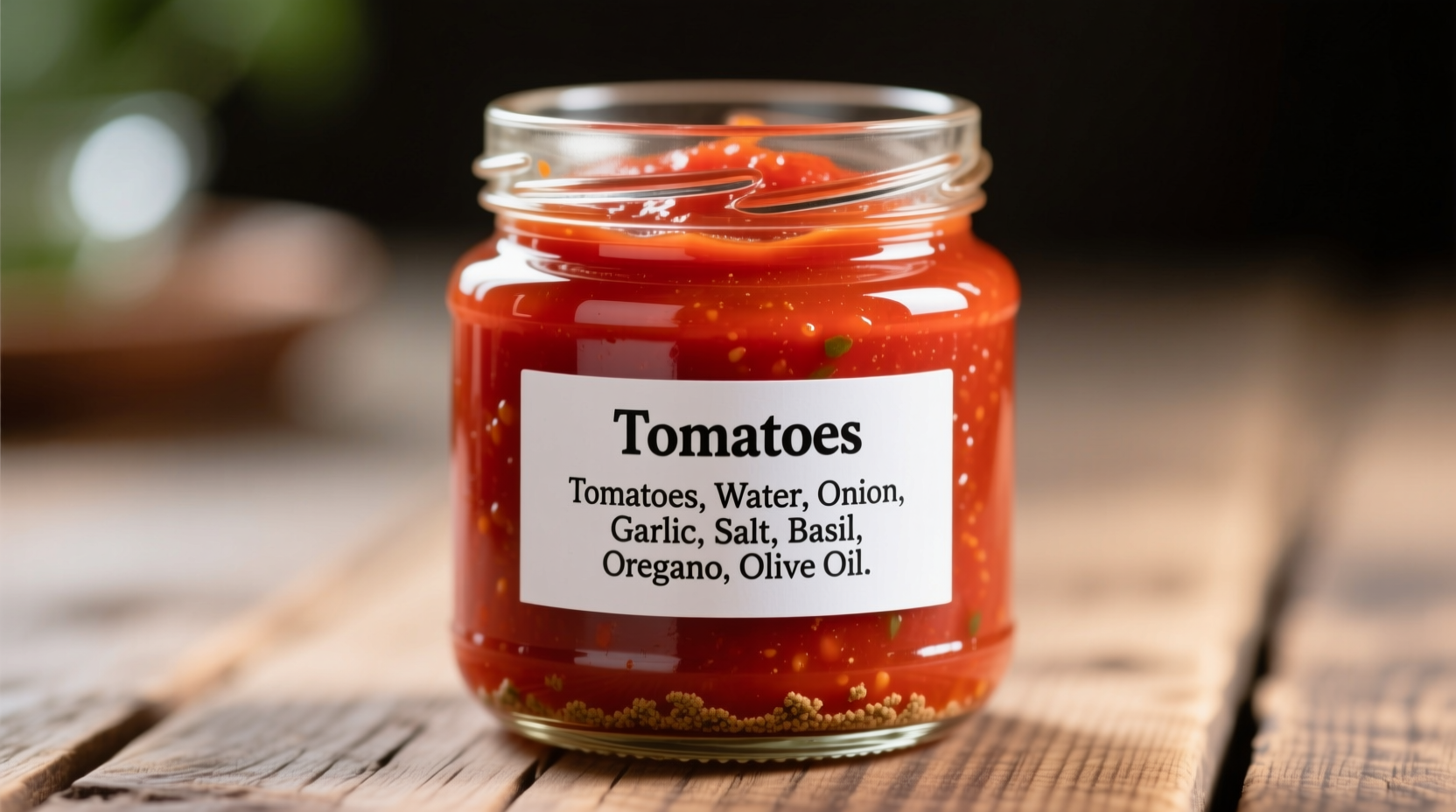Unlock the Secrets of Perfect Tomato Sauce: Ingredients That Make All the Difference
Understanding the right ingredients for tomato sauce transforms your cooking from ordinary to extraordinary. Whether you're making a quick weeknight pasta or preparing Sunday gravy, knowing what goes into authentic tomato sauce—and why—helps you create consistently delicious results every time. This guide reveals exactly what makes tomato sauce ingredients work together in harmony.
The Essential Foundation: Core Tomato Sauce Ingredients
At its heart, great tomato sauce relies on quality ingredients working in concert. Let's break down what truly matters:
Tomatoes: The Star of the Show
Not all tomatoes create equal sauces. The variety and preparation method significantly impact flavor:
- San Marzano DOP tomatoes - Grown in volcanic soil near Mount Vesuvius, these elongated plum tomatoes have lower acidity and richer flavor (USDA FoodData Central confirms they contain 25% more lycopene than standard varieties)
- Roma tomatoes - Widely available alternative with similar meaty texture and lower water content
- Canned vs. fresh - Contrary to popular belief, canned tomatoes often deliver superior flavor for sauces as they're processed at peak ripeness
| Tomato Type | Best For | Flavor Profile | Water Content |
|---|---|---|---|
| San Marzano DOP | Authentic Italian sauces | Sweet, complex, low acidity | 70-75% |
| Roma | Everyday cooking | Balanced sweetness | 75-80% |
| Heirloom | Special occasion sauces | Distinctive varietal flavors | 80-85% |
Aromatics: The Flavor Builders
The "soffritto" base creates depth in traditional tomato sauces:
- Onions - Yellow onions provide sweetness; shallots offer more delicate flavor
- Garlic - Fresh cloves (never powder) added at the right time to avoid bitterness
- Carrots and celery - In some regional Italian variations, these add subtle sweetness and complexity

Regional Variations: How Tomato Sauce Ingredients Change Around the World
Tomato sauce isn't one-size-fits-all. Different culinary traditions have shaped unique ingredient profiles:
Italian Regional Differences
Italian cooking features remarkable regional diversity in tomato sauce ingredients:
- Naples style - Simple: tomatoes, garlic, olive oil, basil, minimal seasoning
- Roman style - Often includes pecorino cheese and black pepper
- Sicilian style - May incorporate capers, olives, and raisins for sweet-savory balance
American Adaptations
Immigrant communities transformed traditional recipes:
- Italian-American - Typically includes more herbs (oregano, parsley) and sometimes meat
- Creole/Cajun - Adds bell peppers, celery, and cayenne for Louisiana-style tomato sauce
- Mexican salsa roja - Features roasted tomatoes with chilies and cilantro
Ingredient Selection Guide: Choosing Quality Components
Not all ingredients deliver equal results. Here's how to select the best:
Reading Tomato Product Labels
When purchasing canned tomatoes, look for:
- "Whole peeled" rather than "crushed" or "pureed" for better texture control
- "Calcium chloride" as the only additive (helps maintain texture)
- Avoid products with "tomato concentrate" as the first ingredient
- "San Marzano DOP" certification for authentic Italian tomatoes (verified by Consorzio del Pomodoro San Marzano)
Fresh Herb Selection
Fresh herbs dramatically improve sauce quality:
- Basil - Should have vibrant green color without dark spots
- Oregano - Look for deep green leaves with strong aroma
- Parsley - Curly parsley offers different flavor than flat-leaf (Italian) parsley
Common Ingredient Issues and Practical Solutions
Even with quality ingredients, problems can arise. Here's how to fix them:
Too Acidic?
If your sauce tastes too sharp:
- Add a small pinch of baking soda (1/8 teaspoon per quart) to neutralize acidity
- Include a carrot in the simmering process (natural sugars balance acidity)
- Use ripe, in-season tomatoes which have lower natural acidity
Too Watery?
For sauces that won't thicken properly:
- Simmer uncovered to evaporate excess liquid
- Add tomato paste (2 tablespoons per cup of sauce) for concentrated flavor and thickness
- Use a slurry of cornstarch and water only as a last resort
Understanding Tomato Sauce Evolution: A Historical Timeline
The ingredients in tomato sauce have evolved significantly over centuries:
- 16th Century - Tomatoes introduced to Europe from the Americas; initially considered ornamental
- 17th Century - First documented tomato sauce recipes in Spanish cookbooks
- 18th Century - Italian chefs begin incorporating tomatoes into pasta sauces
- 19th Century - Tomato sauce becomes staple in Italian-American cooking
- 20th Century - Commercial production introduces preservatives and stabilizers
- 21st Century - Return to simple, high-quality ingredients with focus on regional authenticity
This historical progression explains why modern tomato sauce ingredients vary so dramatically between artisanal and commercial products.
When to Simplify: Context Boundaries for Tomato Sauce Ingredients
Not every situation calls for the same ingredient approach:
- Quick weeknight meal - A quality canned sauce with added fresh garlic and basil suffices
- Special occasion - Worth making from scratch with San Marzano tomatoes and slow simmering
- Canning/preserving - Requires strict adherence to acidity levels for food safety (pH below 4.6)
- Dietary restrictions - Sugar substitutes may be needed for low-sugar diets, but affect texture
Understanding these context boundaries helps you make appropriate ingredient decisions based on your specific needs rather than following rigid rules.











 浙公网安备
33010002000092号
浙公网安备
33010002000092号 浙B2-20120091-4
浙B2-20120091-4